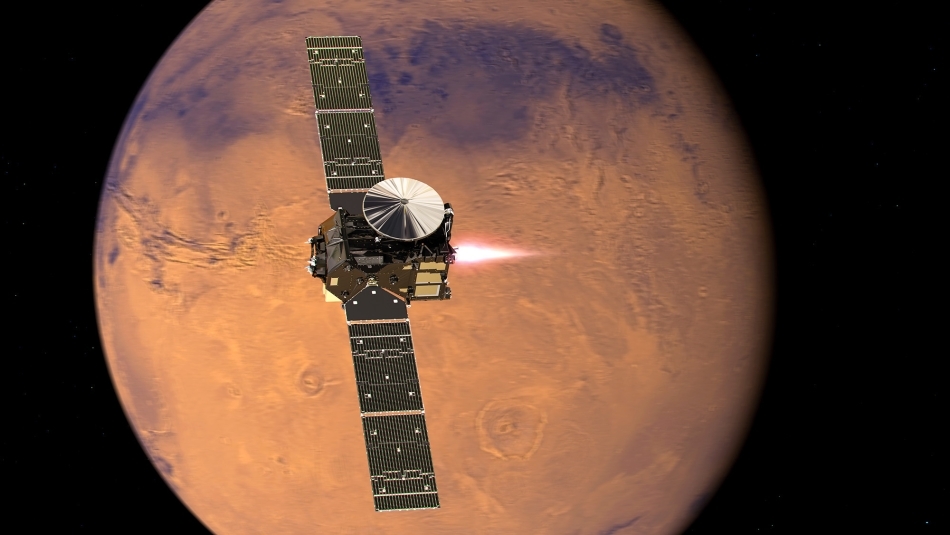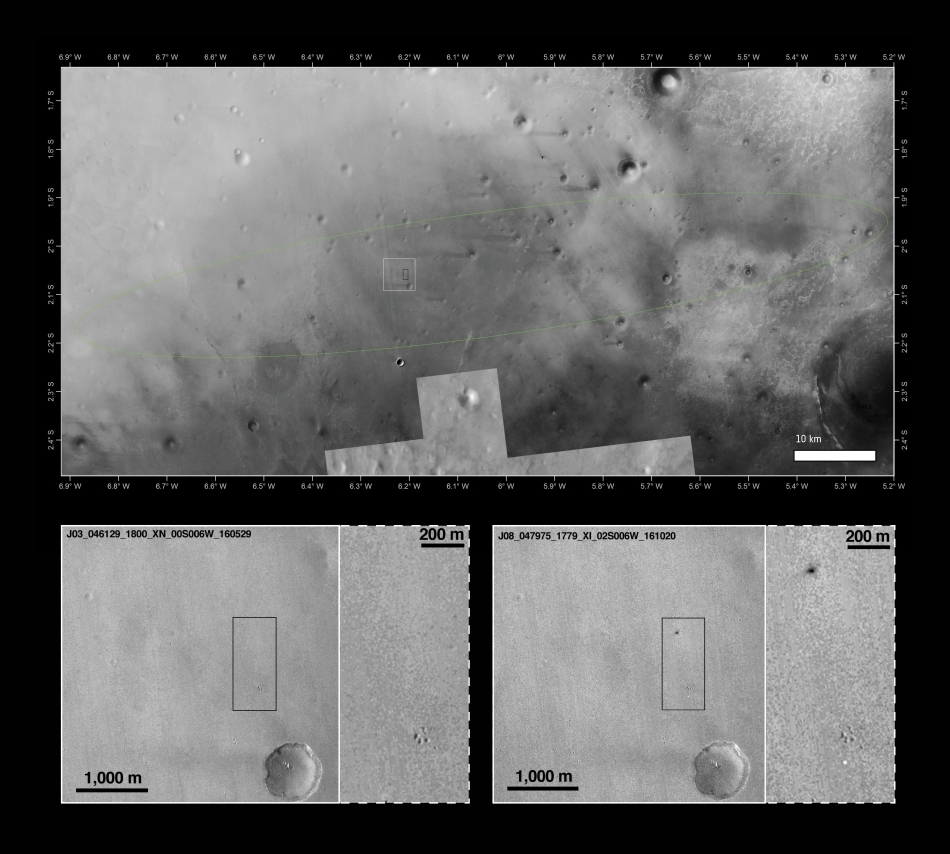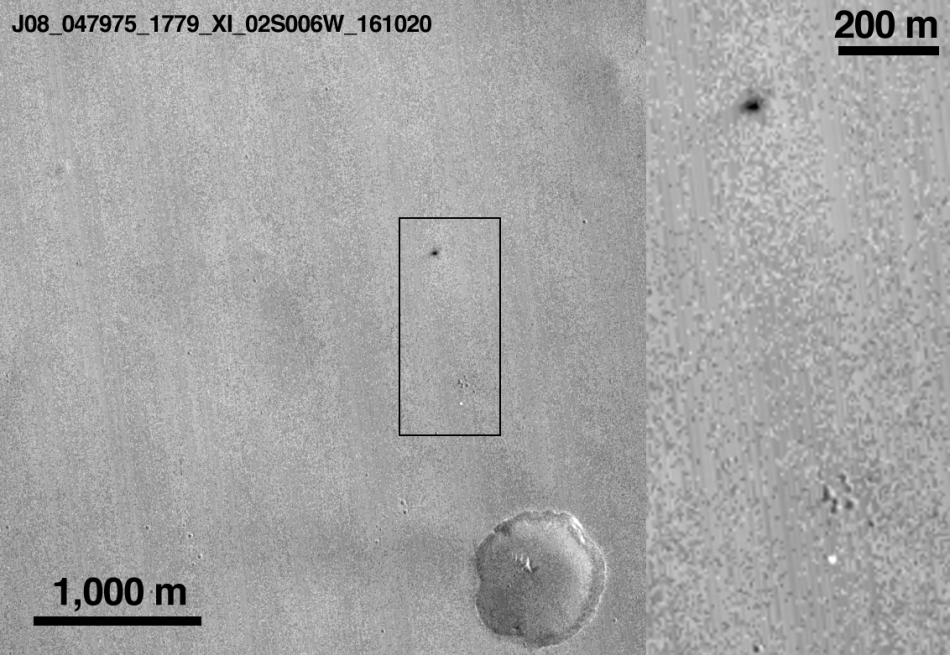Very busy space week

The past week has combined in itself a number of cosmic events, which would be enough for at least a month. The launch and docking of the ship "Shenzhou-11", the accident at the Yupon probe "Yunona", the return to flights of the launch vehicle "Antares", the success and failure of the mission "Exomars", the launch and docking of the Soyuz MS-02. It was not surprising to miss something, so I made a kind of space digest, with news and comments to them.
"Shenzhou-11"
Briefly: The first flight after a break of 3 years, the first flight to a new orbital station, a record for the Chinese space program, the planned duration of the expedition is 1 month.
On October 16, at 23:30 UTC, the sixth Chinese manned ship "Shenzhou-11" launched with cosmonauts Jing Haipeng from the Jiuquan space center (Inner Mongolia) (3rd space flight)
Chen Dong (1st spaceflight).
')
Chinese manned ships fly infrequently, so the video is interesting to watch. It's funny to see how the astronauts synchronously saluted in the last seconds before the start. An unusually spectacle of thermal insulation plates falling from a launching rocket is a common solution for missiles on the heptyl / amyl fuel pair, but there are few such missiles left, and, for example, there is no such thing on our Proton. The peculiarity of the Chinese launch vehicle "The Great March-2F" is also the almost simultaneous discharge of the first and second stages, this moment is perfectly visible on the video. After the launch, the third stage begins to go back and sideways, emptying the tanks, so as not to collide with the ship, and the astronauts at this time play with the writing utensils. Also on the video you can see the process of disclosure of solar cells.
On October 19, the Shenzhou-11 successfully docked with the Tyangun-2 orbital station, launched in September of this year.
On the Chinese ships, in contrast to the modern "Soyuz", an androgynous docking mechanism is used, so the Chinese came up with a beautiful solution - to place the camera inside the docking station along its axis. And we can admire an interesting docking video with a visual demonstration of the operation of the docking mechanism.
After docking, Jing and Chen went to the station. In the later published diaries, the astronauts write that Chen had problems with coordination, which is why he catches him very funny and puts a more experienced Jing to the rail.
One of the experiments is to check whether the silkworm thread will differ in weightlessness from that of the earth. It is reported that the astronauts work schedule is very tight, once they even set up to warm up lunch and forgot about it. The expedition should last a month, so physical training is needed. Chinese astronauts train less than on the ISS, one hour against two, and their treadmill looks very strange. The last record of the duration of the flight of Chinese astronauts is two weeks, which is two times less than the planned duration, and the flight may give surprises to the medical profession.

On Sunday, a special Banxing-2 satellite was launched from the station, the main task of which is photo and video. His camera with an impressive 25 megapixels promises us beautiful pictures.

Plans for the continued use of the station are not very well defined. Even the fact that it has one docking port, and not two, as previously assumed, is not known for certain. Most likely, in the spring of 2017 the station will take the cargo ship in unmanned mode, check the transfer of fuel, and this will end its operation. And already in 2023 a multi-modular station in the style of "Peace" is expected, on which more intensive work will already be deployed. It is a bit strange to spend a rather big station on one manned and one unmanned cargo flight, so I would not be surprised if the plans are revised. Especially since, as promised, until 2023, the Tyangun-2 will remain in orbit.
"Juno"
In short: Due to problems, the probe remains in a 53-day orbit, and its third pass will not bring scientific data.
The last ten days have failed for the probe. On October 15, it was reported that, due to problems with pressurized valves, the probe would not move into a two-week scientific orbit, but would remain on a 53-day high-elliptical one. The boost valves supply helium to the fuel tanks so that the fuel components go into the engine with the required pressure. But when checking instead of a few seconds, they opened a few minutes. With such a malfunction there was no guarantee that Yunon would perform the braking maneuver as it should, therefore it was canceled. According to the plan, because of the maneuver, they wanted to turn off some of the scientific instruments, but since the braking was canceled, we were promised this passage that all scientific instruments would collect data. But 13 hours before periovia (the minimum height of the orbit above Jupiter), when the radiation situation was still far from the maximum, the on-board computer rebooted and went into safe mode. The mission’s mission control center proceeded to the procedures for checking the state of the apparatus, and the third flight in the radiation belts was wasted. This is not a disaster, but the situation is rather unpleasant. If Juno cannot go to a 14-day orbit (which is unlikely), the 36 passes planned for the mission will last more than five years, and this will disrupt the flight plan over the various Jupiter meridians to get a detailed map of the magnetosphere. If the onboard computer regularly goes into safe mode, it will mean that the power of the magnetosphere is underestimated, and the full mission will be under threat. On the one hand, before the flight, the electronics were checked at twice the dose than that calculated for Jupiter, on the other hand, the departure to safe mode is a fact given to us in the
So here, for the time being, it remains only to admire relatively fresh photos of Jupiter:

South Pole with atmospheric vortices ( full size photo )

"Antares"
In short: After a two-year break, Orbital’s private Antares rocket has returned to flying on new RD-181 engines.
After the accident in the fall of 2014, when the turbocharger of the NK-33 engine (AJ-26) collapsed in the first seconds of the flight, Orbital decided to change the engines. Instead of the adapted NK-33, which had been in stock since the 70s, it was decided to install the new Russian RD-181, which, being 45 tons (two engines) more powerful than NK-33, allowed a significant increase in the payload.
The ship Cygnus successfully launched on October 18:

The fact that this was the first flight in this configuration brought a small pleasant surprise, the launch vehicle showed a payload higher than the calculated one. And on Sunday morning, the ship was successfully docked to the ISS.
"Union MS-02"
In brief: The second ship of the new MS series successfully launched and docked to the ISS.

The launch of the Soyuz MS-02, originally planned for the end of September, was postponed for almost a month. Already after the knurling of the head fairing, a violation of electrical insulation was detected - some wire was closed on the case. The fairing had to be removed, and the crew that had already flown to Baikonur were sent back to Moscow. Fortunately, they quickly discovered that the cable that had to be replaced was damaged. The ship successfully launched on Wednesday, October 19, and docked with the ISS on Friday, 21.
The long two-day docking scheme was most likely chosen for ballistic reasons - the six-hour scheme is more demanding for the position of the station, which is not so easy to prepare again if the start was postponed. The expected duration of the mission is 155 days, the crew will perform over 50 experiments only on the Russian segment of the ISS. The most interesting of them include the cultivation of pepper and the study of reproduction of mice in weightlessness.
"Exomars"
Briefly: The mission’s main task - the TGO orbiter successfully went into orbit around Mars, and the landing gear of the Schiaparelli EDM crashed.
The evening of October 19 turned out to be dramatic - two vehicles had to perform complex and precise maneuvers. The orbital Trace Gas Orbiter had to go to a highly elliptical orbit around Mars, and the EDM landing module had to enter the atmosphere of Mars, brake it first with parachutes, then with engines, and land gently.

And if with TGO the message about a successful exit into orbit came quickly enough, then something incomprehensible was happening with the EDM. First of all, he had an experimental direct communication channel - the Indian GMRT telescope received data directly from the EDM. The orbital Martian vehicles also received these signals, but could only send telemetry later. And the GMRT signal was interrupted approximately in the region of the transition from the parachute to the motor part of the landing. This was not yet a cause for alarm - experimental systems may not work as expected. But when telemetry came from the Mars Express orbiter, it became clear that something had gone completely wrong - the data broke before the normal landing would have required. Further study of telemetry showed that at the beginning the landing was absolutely normal - at a speed of 5.83 km / s, the Schiaparelli entered the atmosphere of Mars. Regularly worked the heat shield, and the opening of the parachute was confirmed not only by telemetry, but also by ground measurements of the Doppler signal frequency change. But for some reason, the transition to the landing stage on the engines occurred earlier than planned, and the engines, having worked for only three seconds, switched to the final landing mode. Another 19 seconds the vehicle fell from a height of 2-4 km (instead of the planned 1 km) and hit the surface of Mars at a speed of ~ 300 km / h. The final crater turned out to be so large (15x40 m) that it was found almost immediately in the pictures not by the camera’s keen vision.


Judging by the position of the device almost in the center of the landing ellipse, the stages of entry into the atmosphere, braking heat protection and parachutes passed almost nominally. The analysis of telemetry and the reconstruction of what happened in the last seconds of the EDM flight will take a lot of time, but they have already managed to exclude the version of the radar failure altimeter, which could seem that the module is at a height of meters, not kilometers.

EDM module before starting
Parachute tests
The history of Schiaparelli is instructive in that after three successful landings of NASA rovers, the public could begin to think that landing on Mars is easy. Alas, it is not so, from the landing missions to Mars over the past thirty years, three of the eight, including the Exomarses, ended in failure. For the second time in a row, the European Space Agency failed to land a probe on Mars, and, so far, only American vehicles were working on its surface (14.5 seconds of Mars-3 operation are not taken into account).
Going into TGO orbit is a great success, it will take on a new and very interesting task of finding life on Mars, analyzing trace amounts of methane in the atmosphere. But the second stage of the ExoMars mission should be the rover in 2020, and this mission will be carried out with a much greater degree of risk than if the EDM landing was successful. And the fact that the landing platform for the rover should be done in Russia adds even more risk - we don’t even have unsuccessful landings to Mars over the past forty-plus years. The European Space Agency is now doing a good face on a bad game, and they can be understood. But as a result of the failure of Schiaparelli, something in the 2020 mission may change, and even in something it's good that it was transferred from 2018 - now there will be more time for changes and trials.
Source: https://habr.com/ru/post/398585/
All Articles